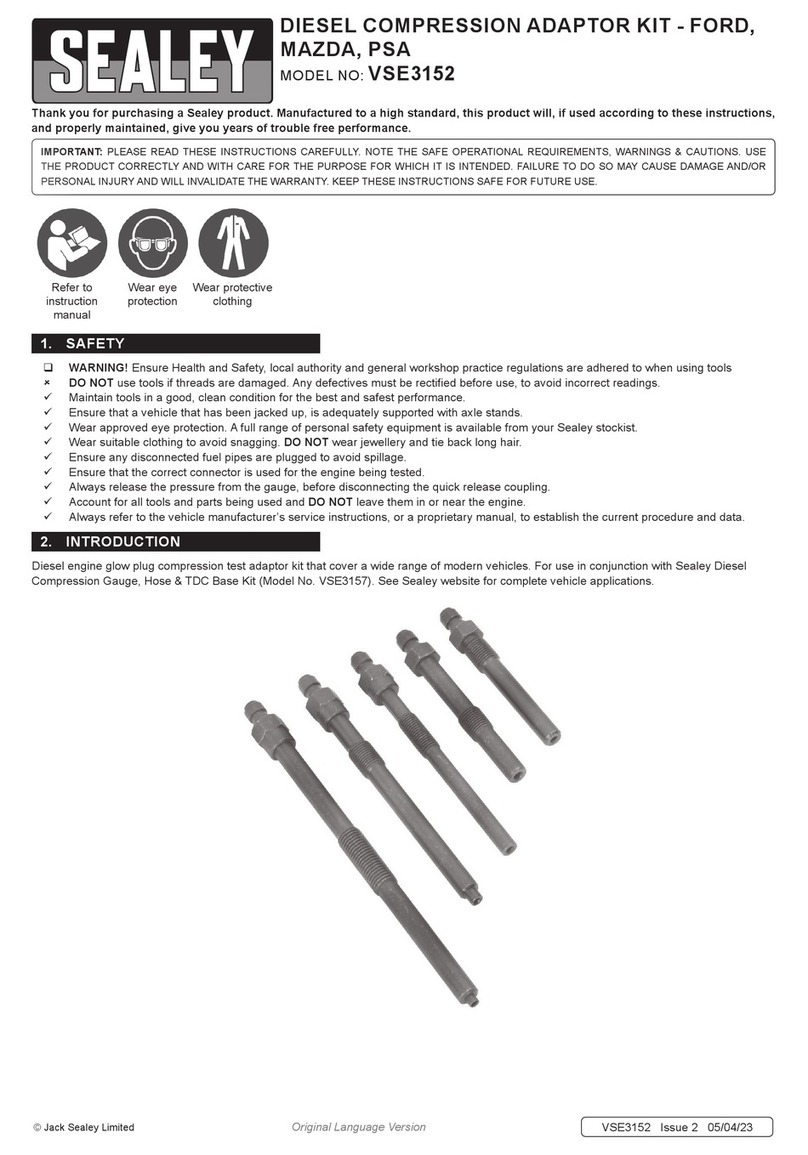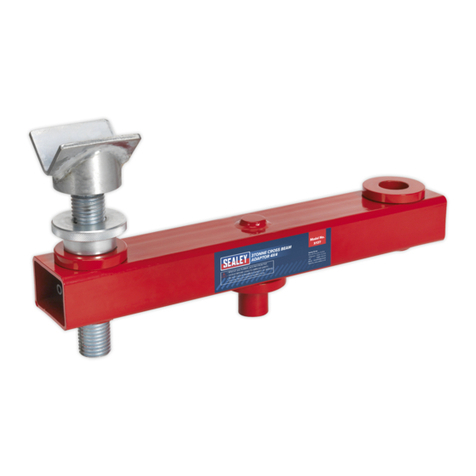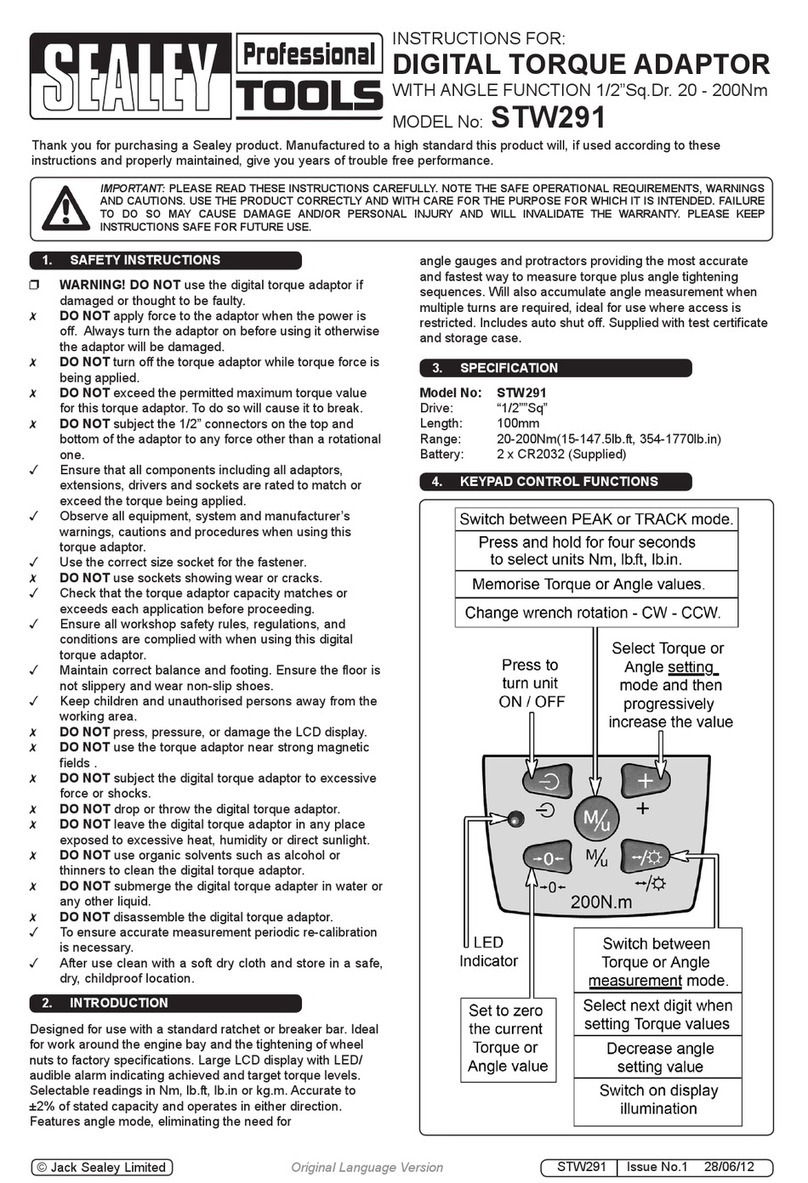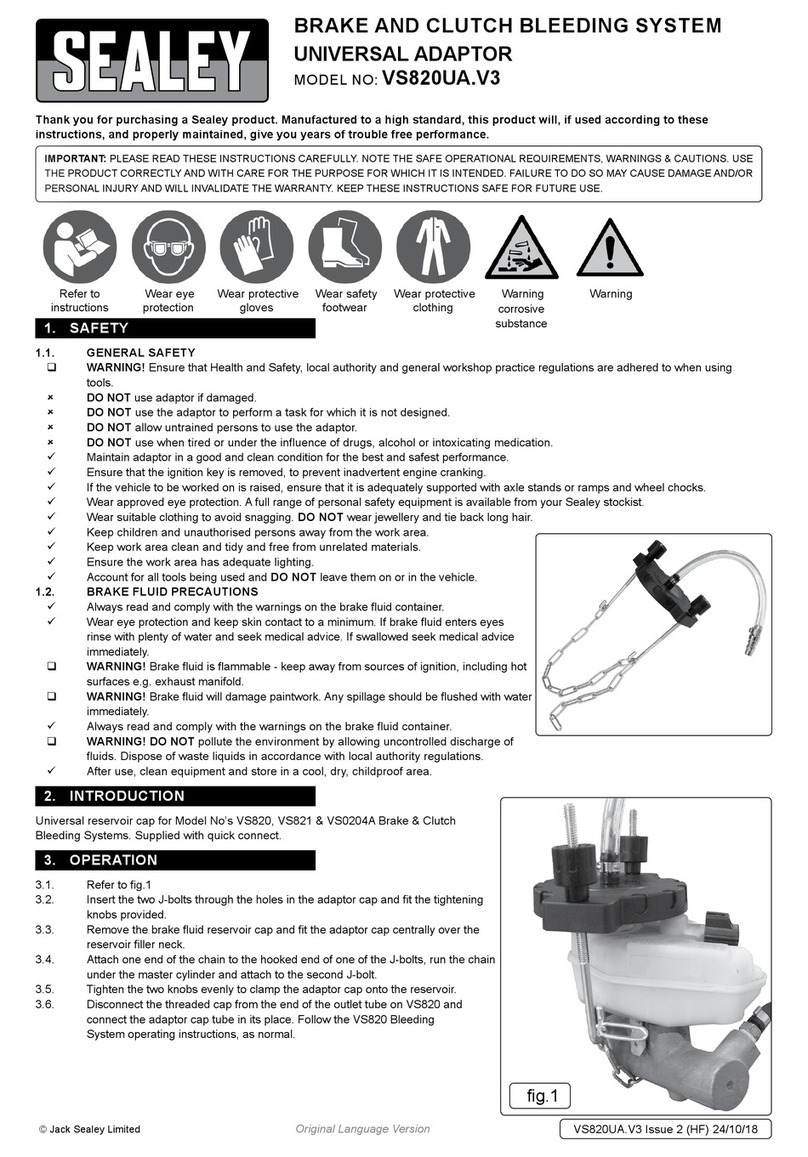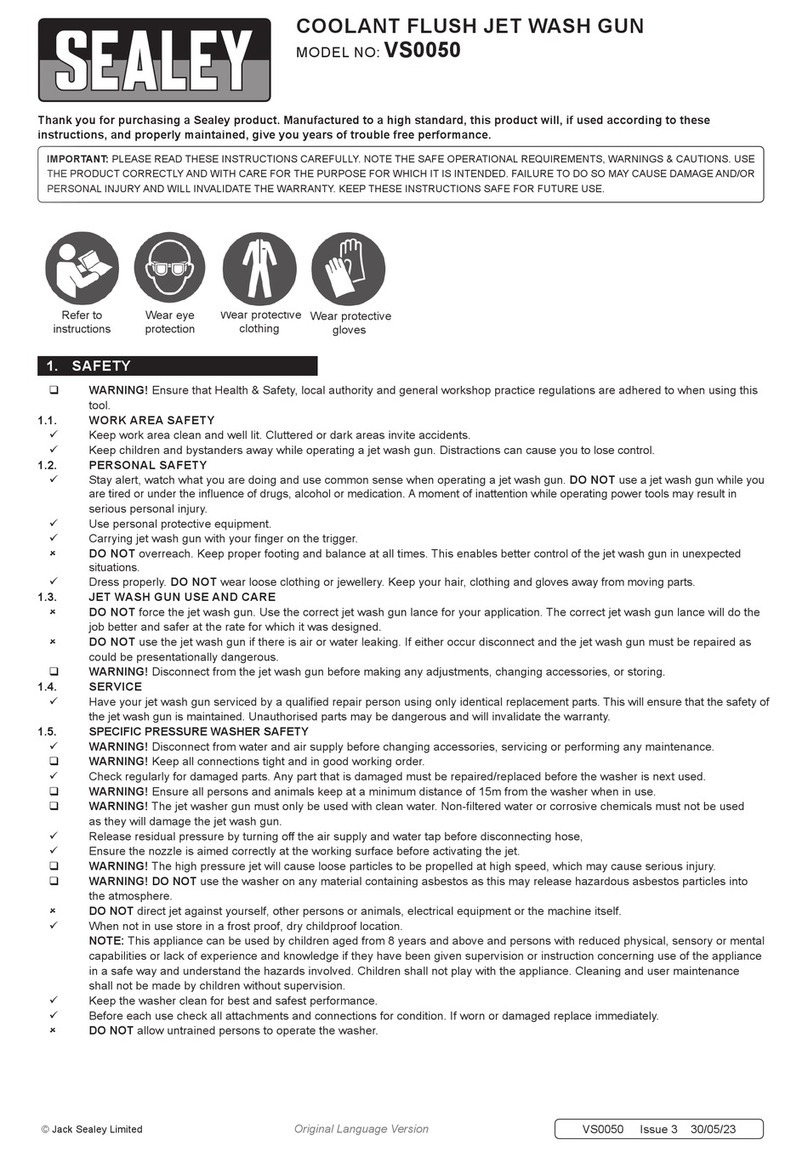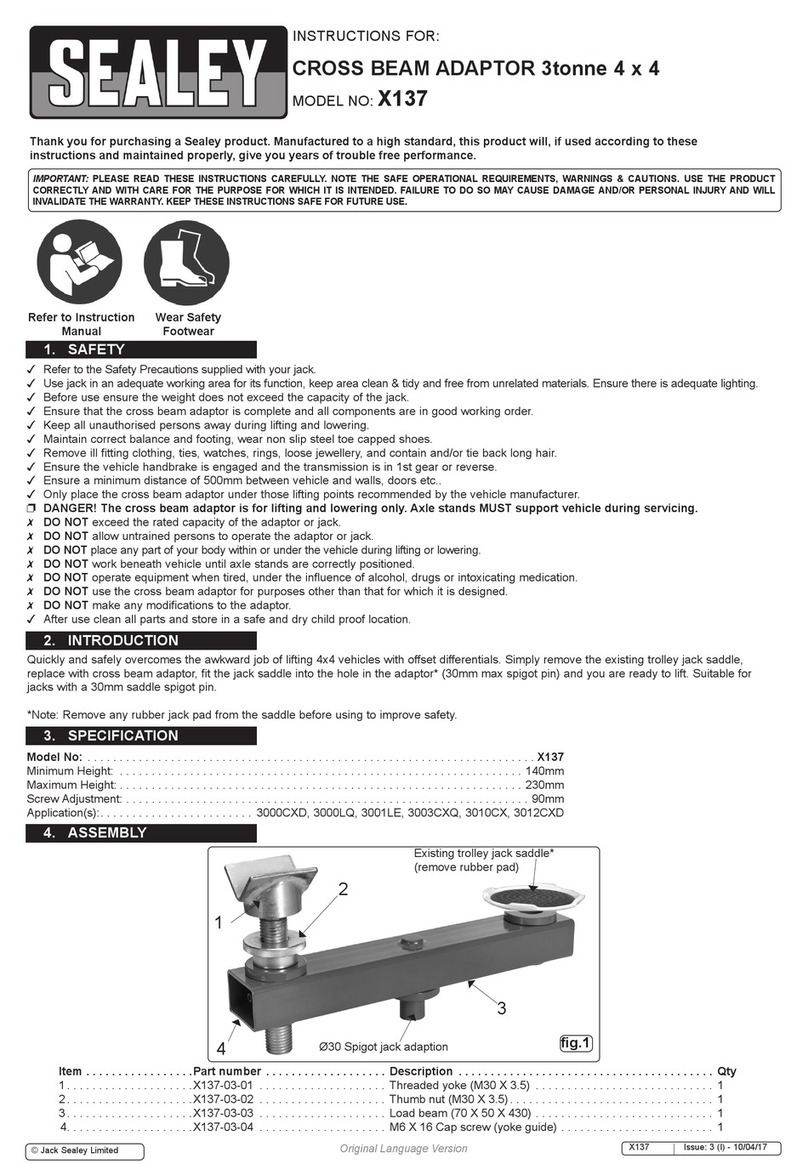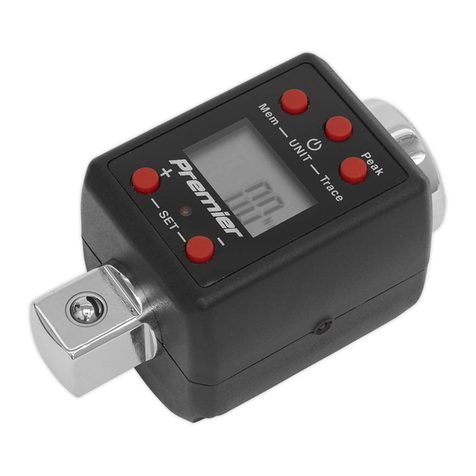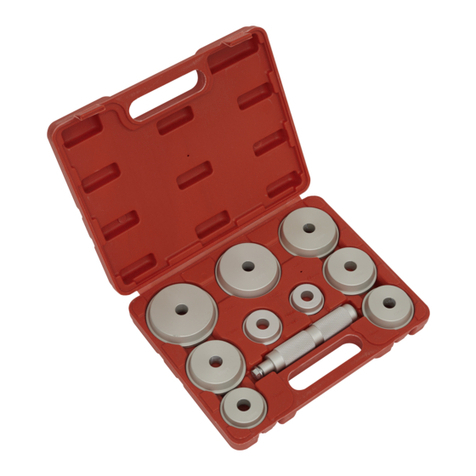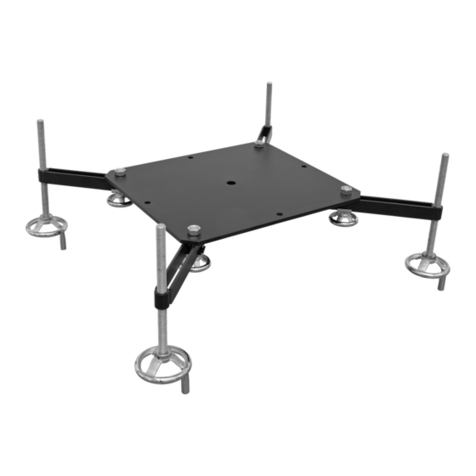
5. OPERATING INSTRUCTIONS
WARNING! YOU MUST FOLLOW SAFETY INSTRUCTIONS AND ENSURE THAT THE ROADSTART AND VEHICLE VOLTAGES ARE THE SAME.
THE PROBLEM
One or two lights come on, you plug in the charger for 20 hours
and there is no change in status of lights.
Charger works well but still no change in status of lights.
No lights comes on, but when the AC adaptor is plugged into the
Roadstart, all the lights come on.
Roadstart is fully charged but has no power.
When using an accessory through cigarette lighter outlet on the
power pack, clicking is heard coming from inside the pack.
THE SOLUTION
Check charger to see if it is charging. Charger should be warm.
Check all connections.
Possible defective battery or faulty breaker. Try a DC device (such
as a light) fitted with a lighter plug to see if it works. If it works,
Roadstart breaker is OK and the battery is the problem.
The internal battery of the Roadstart must be replaced
Check where the wire meets the jaw on the Roadstart clamp. Make
sure they are well crimped.
Accessory is drawing more than 12 amps causing circuit breaker to
cycle on and off. Check accessory for problem (i.e. short circuit).
6. TROUBLESHOOTING
RS1.V3 & RS102.V2 - 1 - 191203
5.1. To use for jump starting (Remember to apply safety rules from Section 3)
NOTE: Before using for the first time, re-charge the Roadstart unit.
5.1.1. Apply the vehicle hand brake and place in neutral gear (or Park if automatic transmission). Turn ignition and electrical accessories off.
5.1.2. Use in a well ventilated area and wear protective eye shields and clothing.
pWARNING! Do not allow the red and black clamps to touch each other. Ensure that the correct clamps are placed on the correct battery terminals.
5.1.3. Attach positive (RED +) clamp to positive terminal on the vehicle battery (for a negative ground system). Ensure connecting points are clean.
Note: On vehicles with multiple batteries connect positive clamp to positive battery terminal which is connected to vehicle electrical system.
5.1.4. Attach the negative (BLACK -) clamp to the (ground) engine block or frame of the vehicle. Ensure that the cables are not in the path of
moving engine parts, such as the fan, and are away from the battery, carburettor/injection system, fuel lines etc.
5.1.5. Make sure that no one is standing near the battery. When all is OK, start the engine.
5.1.6. Once the vehicle has started, disconnect the negative (BLACK -) clamp first and then the positive (RED +) clamp. Store clamps in their holsters.
IMPORTANT: If the vehicle does not start within 6 seconds, DO NOT continue. Let the Roadstarts internal battery cool for 3
minutes before attempting to start vehicle again. Failure to do so may damage the unit.
5.2. Use as an alternative power supply
Using the RS1.V3 / RS102.V2 to protect electrical components with built in memory such as radios, alarm systems,
computers, phones, etc. when the vehicle battery is disconnected.
5.2.1. Plug the DC charging cable into the unit charge socket and the other end into the vehicle cigarette lighter socket.
5.2.2. Ensure that all vehicle electrical equipment is switched off and then switch ignition on.
5.2.3. Disconnect and remove the vehicle battery, taking care to prevent the positive cable
terminal from contacting any metalwork as it will be live (cover it with a heavy duty plastic
bag).The unit will now provide the power supply to maintain any electronic memories.
5.2.4. When the vehicle battery, fully charged, has been replaced, the Roadstart may be
disconnected.
5.3. Use as a multi-purpose power supply
5.3.1. The Roadstart may be used as a portable power source for DC accessories, of the appropriate
voltage, equipped with a male cigarette lighter plug.
For example: Portable light, coffee maker, portable TV etc. The DC outlet has an
automatic overload protection of 12 amps.
AC/DC Adaptor
Model Nos. RS1.V3C, RS102.V2C
73/23/EEC Low Voltage Directive
89/336/EEC EMC Directive
93/68/EEC CE Marking Directive
Declaration of Conformity We, the sole importer into the UK, declare that the products listed below are in conformity with the following standards and directives.
The construction files for these products are held by the Manufacturer and may be inspected, by a national
authority, upon request to Jack Sealey Ltd.
For Jack Sealey Ltd. Sole importer into the UK of Sealey Power Products.
19th December 2003
Signed by Mark Sweetman
QUESTION:
How many jump starts can a fully charged
Roadstart do before needing to be recharged?
Can the Roadstart be recycled?
What is the ideal in-use storage temperature
of the Roadstart?
I have a regular 10 amp battery charger, can I use
it to recharge the Roadstart?
Is the Roadstart fool proof?
Can I replace the power pack battery?
ANSWER:
Between 1 and 20 depending upon operating factors such as temperature,
general condition of the vehicle, engine type and size.
Yes, in accordance with local authority regulations.
Room temperature. The Roadstart will also operate at temperatures below zero,
power, however, will be lessened. Intense heat will activate self discharge.
NO, only the supplied AC charging adaptor can be used.
No. All jump starting instructions must be followed carefully.
Yes, but note: the battery is not covered by warranty as it is a consumable item.
7. QUESTIONS & ANSWERS
8. DECLARATION OF CONFORMITY
